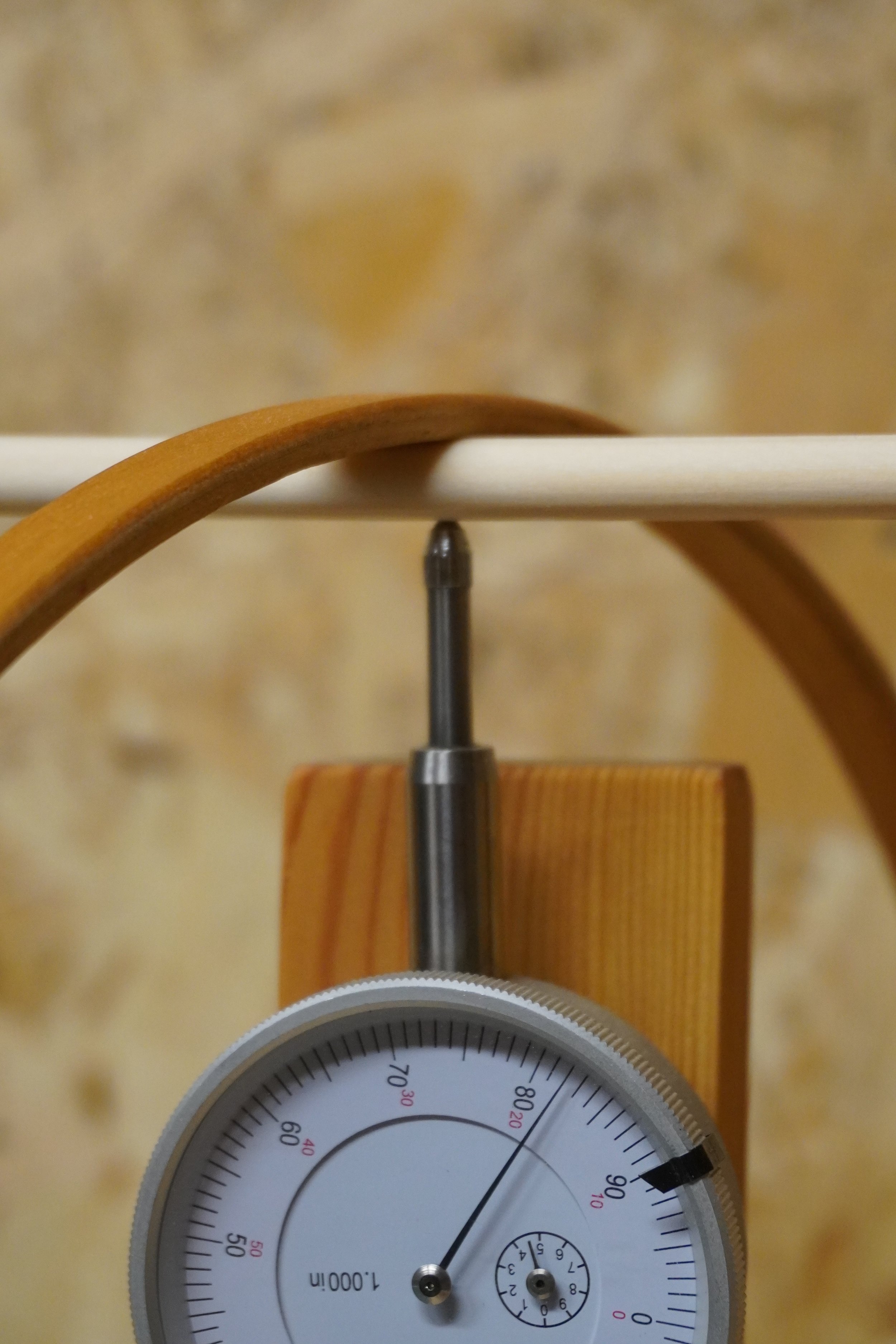A Spine tester
As Part of my apprenticeship I was tasked with the creation of a spine tester. A Spine tester for those unfamiliar with the term is a device that tests the stiffness of the arrowshafts. In traditional archery the wooden shaft needs to bend around the handle of the bow. This is part of the Archers paradox. The stiffness of the shaft thus impacts the way the arrow bends.
What is a spine tester
An Arrow that is to stiff will have a harder time curving around that shaft, thus making the arrow vier off to the side the arrow passes. Is it to soft it will easily curve around, and move to far to the opposite site, making it hard for the arrow to return to the center line of the shot. A correctly spined arrow will curve just enugh so that the natural resonant wobble will quickly converge around the center line.
The question of appropriately spined arrows becomes more and more important the shorter the distance of the shot to be taken. As the longer the distance the more time an arrow has to return to the center line.
Another reason a good spine tester comes form the central challange of archery. In order to achieve the same result, we need to repeat with the exact same actions with the same parameters. Spine being one such parameter, an archer all things else being equal, cannot achieve the exact same result if the arrows have widely different spines. As such archers interested in the best results are advised to aquire arrows that are closely matched in spine.
Designing the spine tester
The making of the spine tester, was one of my hardest tasks at the time, as I had problems finding both the material that I wanted, and the design I wanted. I had a look at several different designs, and quickly found out that the design with a deflection arm, would be to inflexible and imprecise for my preference (yes, I am peculiar on precision). So the use of deflection meter was given. But what design?
The way to utilise a deflection meter are many. Either a direct measure, on push or pull. Where is the weight placed compared to the meter. What is used as weight. After looking at more designs, That all have different advantages.
My spine tester
I ended up deciding on a iteration of the design that my Master employed (The Purple one).
The main features of the design are the fact that presure is applied directly above the deflection meter. While the weight sits directly bellow the meter. The wooden hoop avoids the problem I had with a earlier test design where I used thread that held the weight causing, friction between the threads and the wooden sides, caused the readings to become imprecise. The whole ensamble is tuned to be 1.8lb
Using a machinist deflection meter, gave me a 0.001” precision, more than enugh for arrow spinning, where a single pund in draweight might span several 0.01” deflection.
Two set screws placed at exactly 26” apart can bee used to adjust the hight in case shafts are so crooked that they do not touch the deflection meter
Another usefull feature is that the whole device is fastend with 3 pegs and can be dsiassabled for travel.
What about digital spinetesters?
In recent years a selection of digital spine testers have arrived on the marked. And while they are pricey, the volum of arrows to be spined, might make it something to considered. However I am very happy with the current spine tester. It has served me very well for several years by now. And don’t really anticipate the need to change anytime soon.
The precision that comes form using a deflection meter is sufficient, that there are no need to replace on account of increased precision.
Final words
I hope you enjoyed a look at one of the tools of the trade, in more detail. The Spine tester is one of the most important tools in the question of making precision matched arrows. They exist in many versions, and most every fletcher has their preferences. This tool was a challenge to create at the time I did, but it has served me well ever since.








